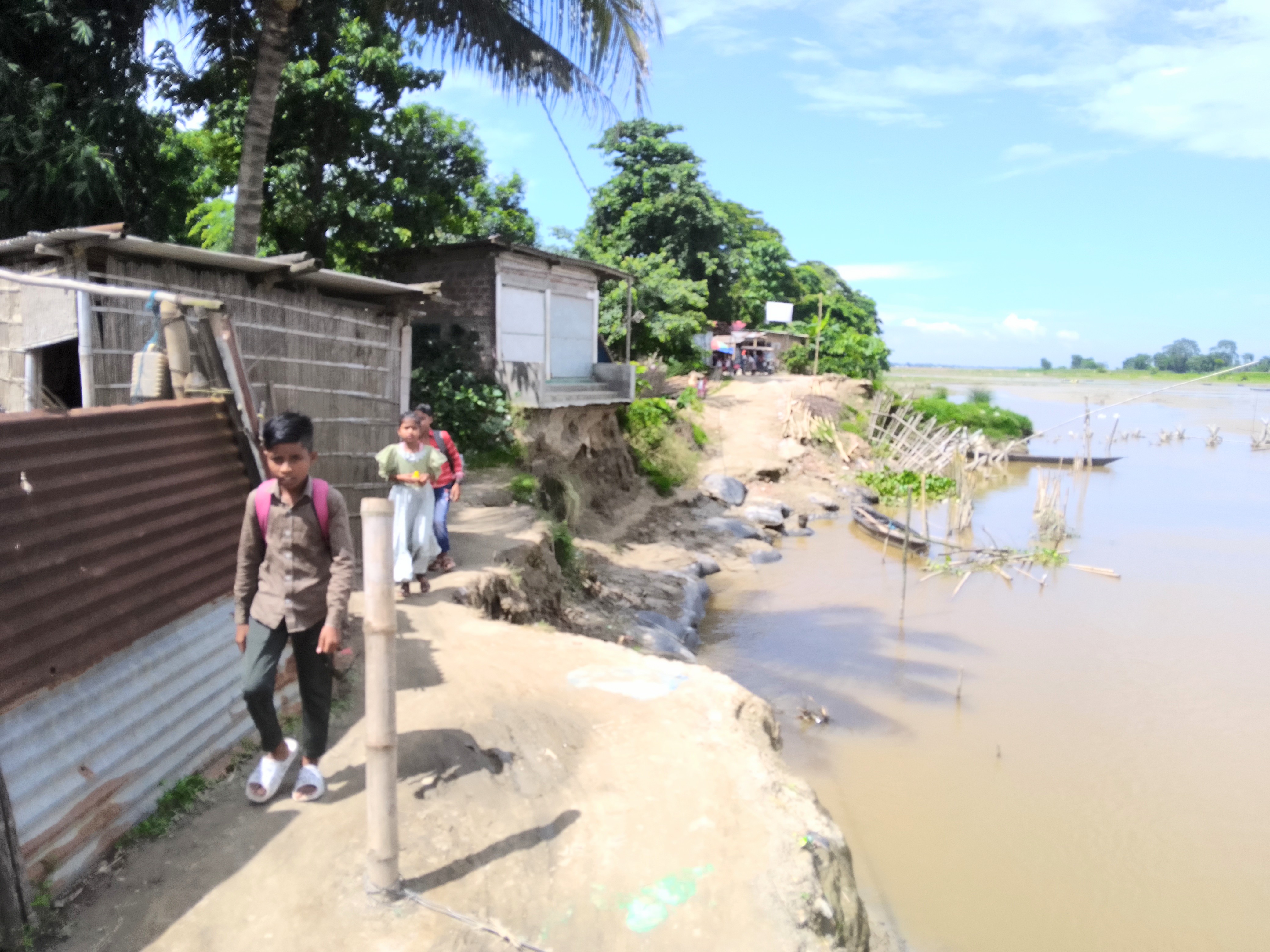Villages Disappeared Due to River Erosion : Climate Survivors Living on Embankments for 30 Years ...Many girls and boys have been working as...
 |
Villages Disappeared Due to River Erosion : Climate Survivors Living on Embankments for 30 Years
...Many girls and boys have been working as domestic helper after dropping out of school...
DIGANTA SARMA
Siraj Ali Ahmed, a 35-year-old from Alikash village of Palashbari Revenue circle under Kamrup district, Assam said, 'I shifted to the embankment when I was about five years old after our crop land and homes were eroded by the Brahmaputra. We have been living here for the last 30 years and are yet to get rehabilitated.'
Hasina Bibi, a 55-year-old woman from the same village who has also been living on the embankment for the last 30 years. She said, 'As we do not possess any land, we have not been able to avail several government schemes like houses for poor families (under the Pradhan Mantri Awas Yojana), Individual Beneficiary Scheme, etc., as those schemes are generally allotted to families who have land of their own. My two daughters were brought up on the embankment and got married from the embankment. As we don't have any land, my two sons have no other options for income. Almost everyday, they goes to another area seeking work. Once, we had cultivable land and produced rice and sugarcane. Now we are spending life as like as bagger.'
My two daughters were brought up on the embankment and got married from the embankment. As we don't have any land, my two adult sons have no other options for income and they goes everyday seeking daily work to another area.
As like as Siraj, Hasina, more than a thousand landless families, affected by flood and erosion are currently staying and living in makeshift houses on an embankment at Palashbari.
It is found that over 1,100 such clim survivor families, are residing on the Palasbari-Gumi-Nagarbera embankment under Garoimari and Palashbari revenue circles in Kamrup district for more than 30 years now. Those climate victims people had lost their entire land and houses due to erosion by the Brahmaputra river. Many of these families have been deprived of the basic amenities and government schemes meant for rural poor.
On the other hand, these families are far from the scientific senitation system and pure drinking water facilities. Basically, for women and children have been suffering a lot and the frequency of vector born disease is high among these people.
Villages like Dowapara, Karipara, Guimara, Chapathuri, Lakhirtari, Simina, No.1 Futuri, No.2 Futuri, Bartari, Panikhaiti, Alikash, Banipara, Biturtari, Telipara, Baghardia, Barghat, Bhokuwamari, Kondolpara, Balagaon, Sengratari, Bhurakata, Charaimari, etc.under Kamrup district are now history after their disappearance from the map.
Several other villages like Guimara, Kandulimari, Satrapara, Jarabari, Dhumgara, Jahirpur, Makadhuj, Bejortari, Jarabari, Kendurtol, etc., have also been partly eroded and hundreds of hectares of fertile land have been washed away, breaking the backbone of the farmer families. Ayez Hussain, a 70-year-old from Phuturi village who have been staying on the Palasbari-Gumi embankment in a makeshift house with other several thousands of families who lost their entire land and houses, who had shifted to safer places. Though the government has rehabilitated several hundreds of families in the past 40 years, over 1,000 families are yet to be rehabilitated.
 |
| Scientific senitation, a distant dream for victims |
As far as education is concerned, the children of some victims families have not been able to continue even their primary education, and dropped out of school. 'Many girls and boys have been working as domestic help after dropping out of school', said Akash Ali, a 35-year-old of Alikash village.
Most of the people here are daily-wage earners. Some work as fishermen, truck labourers, some work in the sand mahals and private agricultural land, and somehow manage to meals for a day.
As far as healthcare facilities are concerned, many people on the embankment have died without getting proper treatment as they are not able to afford it. The rate of childbirth is high, and many children have been found to be suffering from malnutrition. The victims people approached the government many times demanding rehabilitation and till date, they are waiting for positive response from the government. Still, the rehabilitation is a distant dream for those climate survivors.






No comments